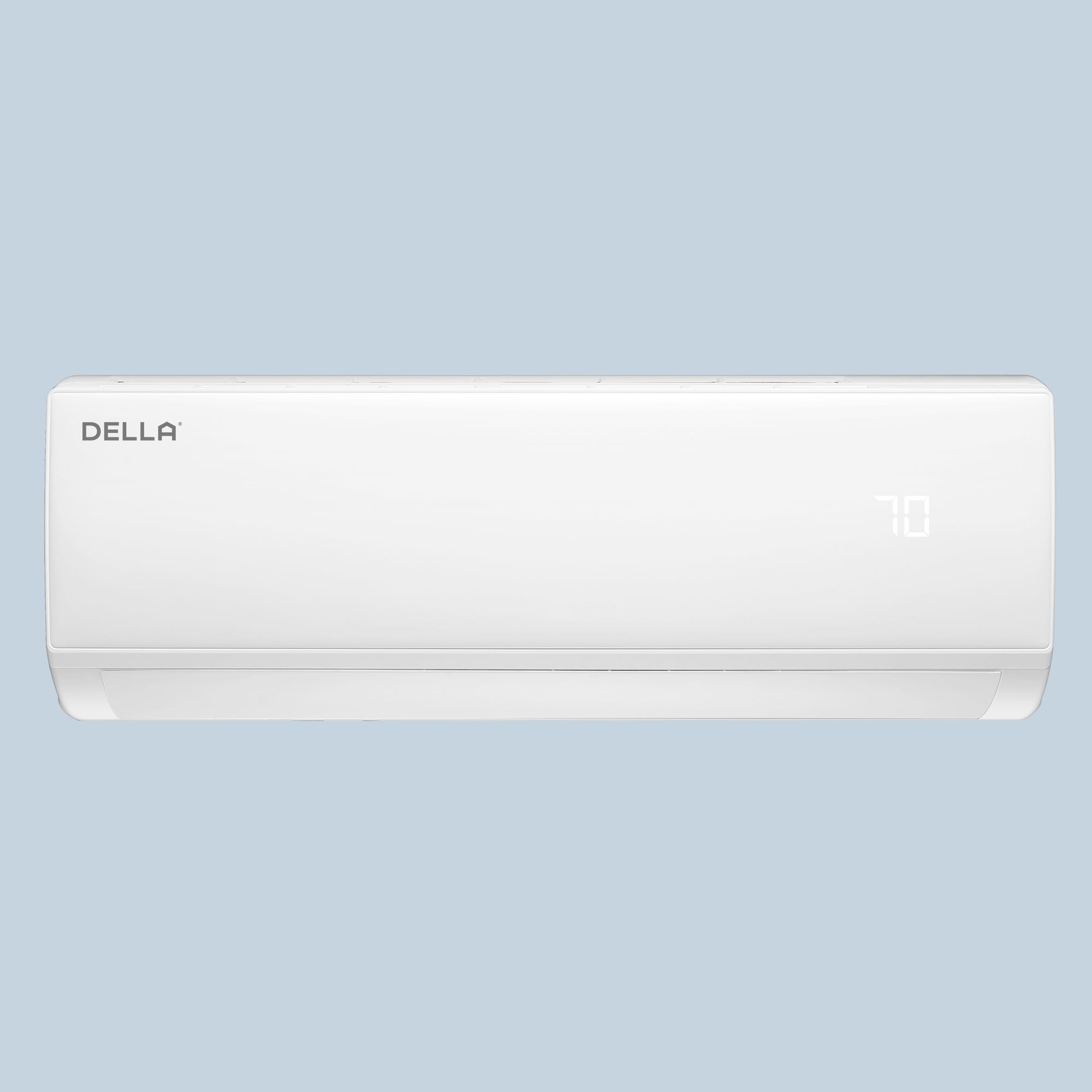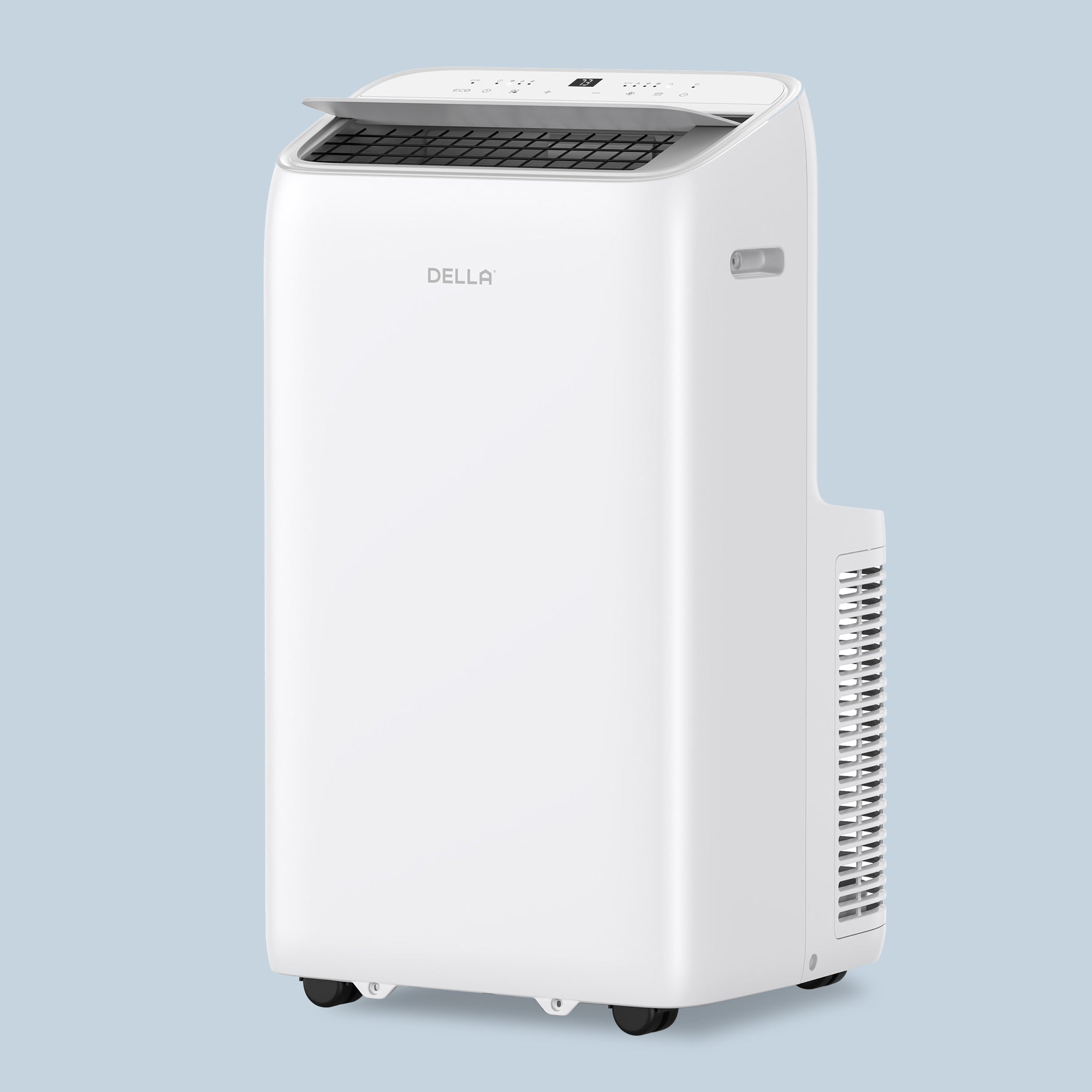Your decision about a single zone vs. a multi-zone mini-split system is based on the needs of your home. If you are unsure what type will better serve your home, this guide will help you step through the question considering costs, performance and energy efficiency.
Single-zone systems that can be free-standing are good for cooling or heating just one room or space, like your office or garage.
Multi-zone systems can connect several rooms to an outdoor unit; this is a very desirable option for larger homes if you need to have the flexibility.
The choice of single vs multi will come down to the starting cost of the unit, energy use savings over time and how many rooms you wish to have individual temperature control.
Keep reading!
What is a Multi-Zone Mini Split?

A multi-zone mini-split system has one outdoor compressor connected to multiple indoor air handlers (typically 2-5 units).
Unlike conventional HVAC systems, each indoor unit operates independently, including the ability to set different temperature levels in each room.
A multi-zone system is often the best choice when individualised comfort is most important in several rooms in one home.
How It Works
● One outdoor condenser connects to multiple indoor units.
● Each indoor unit has its own thermostat, allowing customised cooling or heating per room.
● The system adjusts compressor power based on total demand from all active zones.
Key Features
✔ Single Outdoor Unit – Supports 2-5 indoor units, reducing outdoor space requirements.
✔ Zone-Specific Control – Bedrooms, living areas, and kitchens can each have different temperature settings.
✔ Lower Installation Cost – Cheaper than installing separate single-zone systems for each room.
✔ Energy Efficiency – Inverter technology adjusts cooling/heating output to match demand, saving power.
Best For:
● Homes with multiple rooms needing climate control.
● Spaces where central ductwork isn’t feasible.
● Households that want to balance comfort and energy savings.
While multi-zone systems offer flexibility, performance depends on proper sizing—an undersized outdoor unit may struggle to cool/heating all zones at peak demand. A professional HVAC assessment ensures optimal efficiency.

What is a Single-Zone Mini Split?
A single-zone mini-split system is a self-contained heating and cooling solution designed for one specific room or area.
It consists of just two main components: one outdoor condenser unit connected to a single indoor air handler. This straightforward setup makes it ideal for targeted temperature control in individual spaces.
How It Works
● The outdoor compressor unit links directly to one indoor unit (wall-mounted, ceiling cassette, or floor console)
● The system operates independently with its own thermostat
● It provides dedicated cooling or heating to just the connected space
Key Features
✔ Simple Installation - Only requires mounting one indoor and one outdoor unit
✔ Maximum Efficiency - Delivers full power to a single space without shared capacity
✔ Complete Independence - Each system operates separately from others in the home
✔ Easy Maintenance - Problems affect only that specific unit, not your whole HVAC system
Best For:
● Individual rooms like bedrooms, home offices, or garages
● Home additions where extending ductwork isn’t practical
● Spaces needing precise temperature control
● Situations where you want to avoid the complexity of multi-zone systems

What is the Difference Between Single Zone and Multi-Zone Systems?
The main difference lies in how many indoor units are connected to the outdoor unit:
| Feature | Multi-Zone Mini Split | Single-Zone Mini Split |
| Number of Indoor Units | 2-5 per outdoor unit | 1 per outdoor unit |
| Installation Complexity | More complex (requires proper sizing) | Simpler |
| Cost (Upfront) | Lower per zone | Higher per zone |
| Energy Efficiency | Slightly lower (shared load) | Higher (dedicated system) |
| Flexibility | Limited by outdoor unit capacity | Fully independent systems |
| Maintenance | One failure affects multiple zones | Isolated issues |
Pros and Cons of Multi-Zone Mini Splits
Pros:
● Cost-effective for multiple rooms – Cheaper than installing several single-zone units.
● Space-saving – Only one outdoor unit needed.
● Zoned comfort – Different temperatures for each room.
● Easier permits & installation – Only one outdoor unit to install.
Cons:
● Limited capacity – If the outdoor unit is undersized, performance suffers.
● Single point of failure – If the outdoor unit fails, all zones lose cooling/heating.
● Less efficiency – Shared load can reduce energy savings compared to dedicated systems.
Pros and Cons of Single-Zone Mini Splits
Pros:
● Higher efficiency – Each system runs independently, optimizing energy use.
● No shared load issues – One unit failing doesn’t affect others.
● Better for small spaces – Ideal for garages, home offices, or additions.
● More control – Each unit can be turned on/off independently.
Cons:
● Higher upfront cost – More outdoor units mean higher installation expenses.
● More outdoor space needed – Each system requires its own condenser.
● Multiple installations – More labor and potential permits required.

Is a Multi-Zone Mini Split Better Than a Single-Zone System?
The answer depends entirely on your home’s needs and how you use your spaces. Here’s how to decide:
When to Choose Multi-Zone:
Multi-zone systems work best when cooling or heating multiple connected rooms. They’re ideal if you have limited outdoor space for condensers or want to avoid the higher installation costs of multiple single-zone units.
The single outdoor unit serving 2-5 indoor handlers makes them perfect for open floor plans or homes where ductwork isn’t feasible.
When Single-Zone Excels:
Single-zone units deliver superior performance for individual spaces. They’re the smart choice when you need maximum efficiency in one room, complete temperature independence, or are conditioning detached areas like garages.
While requiring more outdoor units, they eliminate the “all eggs in one basket” risk of multi-zone systems.
Hybrid Approach:
Many homeowners combine both - using multi-zone for main living areas and single-zone units for specialty spaces. This balances whole-home comfort with precision control where it matters most.
The better system depends on your specific situation rather than one being universally superior. Consider your home’s layout, usage patterns, and comfort priorities when deciding.
Multi-Zone vs. Multiple Single-Zone Mini Split: Cost Comparison
Upfront Costs
| System Type | Average Cost (Installed) |
| Single-Zone (1:1) | $3,000 - $5,500 per unit |
| Multi-Zone (1:2) | $5,000 - $8,500 (for 2 zones) |
| Multi-Zone (1:3+) | $7,000 - $12,000 (for 3+ zones) |
Example: Cooling 3 rooms could cost:
● 3 Single-Zone Units: $9,000 - $16,500
● 1 multi-zone mini-split (3-zone) Unit: $7,000 - $12,000
Multi-zone is cheaper upfront for multiple rooms.
Long-Term Costs
● Energy Efficiency: Single-zone units often use less energy since they’re not sharing capacity.
● Maintenance: Multi-zone systems may have higher repair costs if the outdoor unit fails.
● Flexibility: Adding more zones later is easier with single-zone units.
Conclusion
● For whole-home comfort with cost savings → Multi-zone mini-split
● For maximum efficiency & independent control → Multiple single-zone mini-splits
If you’re still unsure, consult an HVAC professional to assess your home’s layout, insulation, and cooling/heating needs.
Final Recommendation:
● Small homes (1-2 rooms): Single-zone
● Medium/large homes (3+ rooms): Multi-zone
● Mixed-use spaces (e.g., home + garage): Combination of both
For the best air conditioner sale prices on both single and multi-zone systems, including energy-efficient mini split heat pump options, visit Della's complete selection today.
Looking for a mini-split system? Explore Della's ductless solutions for high-efficiency heating and cooling!








LEAVE A COMMENT
All comments are moderated before being published.
This site is protected by hCaptcha and the hCaptcha Privacy Policy and Terms of Service apply.